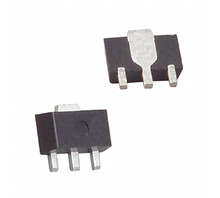Manufacturer Part Number
UA78L10ACPK
Manufacturer
Texas Instruments
Introduction
UA78L10ACPK is a low drop-out (LDO) linear regulator designed for power management, providing a fixed 10V output from an input of up to 25V. It is part of Texas Instruments' extensive range of voltage regulators, designed for applications requiring stable and reliable power supply.
Product Features and Performance
Voltage regulation with fixed 10V output
Low dropout voltage: 1.7V @ 40mA
Output current up to 100mA
PSRR: 44dB at 120Hz
Operates over a wide temperature range from 0°C to 125°C
Over Current, Over Temperature, Reverse Polarity, and Short Circuit Protection
Product Advantages
High reliability and stability for sensitive applications
Low dropout voltage ideal for battery-powered devices
Comprehensive protection features enhance safety
Wide operating temperature range suitable for industrial applications
Key Technical Parameters
Input Voltage (Max): 25V
Output Voltage (Min/Fixed): 10V
Voltage Dropout (Max): 1.7V @ 40mA
Current Output: 100mA
PSRR: 44dB (120Hz)
Operating Temperature: 0°C ~ 125°C
Quality and Safety Features
Protection against over-current, over-temperature, reverse polarity, and short circuit
Built for reliability and safety across various conditions
Compatibility
Compatible with a wide range of applications requiring 10V regulated output
Application Areas
Consumer Electronics
Industrial Automation
Telecommunications Systems
Portable Battery-powered Devices
Product Lifecycle
Product Status: Last Time Buy
Indicates nearing end of life with limited availability
Consult Texas Instruments for replacements or upgrades
Several Key Reasons to Choose This Product
High reliability and consistent performance from a trusted manufacturer, Texas Instruments
Low dropout voltage to maximize battery life in portable devices
Comprehensive protection features safeguard your application
Wide operating temperature range supports use in demanding environments
The Last Time Buy status offers a final opportunity to integrate a trusted solution before exploring newer alternatives




 UA78L09ACLPRTexas InstrumentsIC REG LINEAR 9V 100MA TO92-3
UA78L09ACLPRTexas InstrumentsIC REG LINEAR 9V 100MA TO92-3 UA78L10ACLPRTexas Instruments
UA78L10ACLPRTexas Instruments